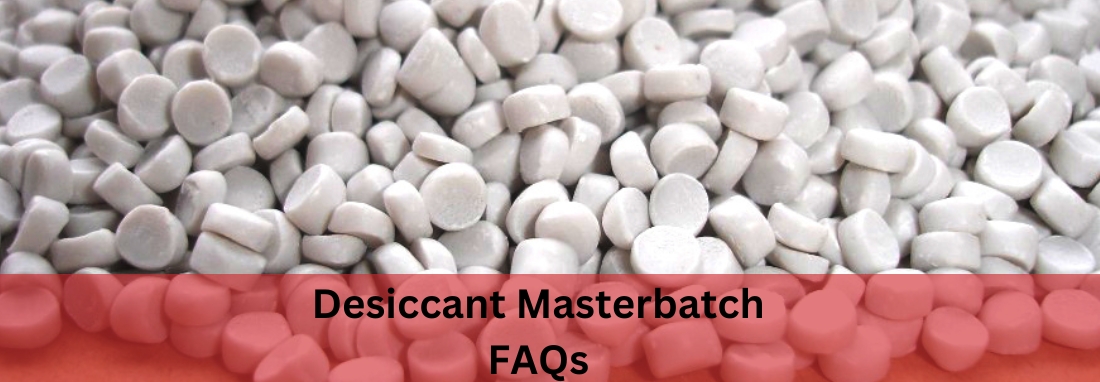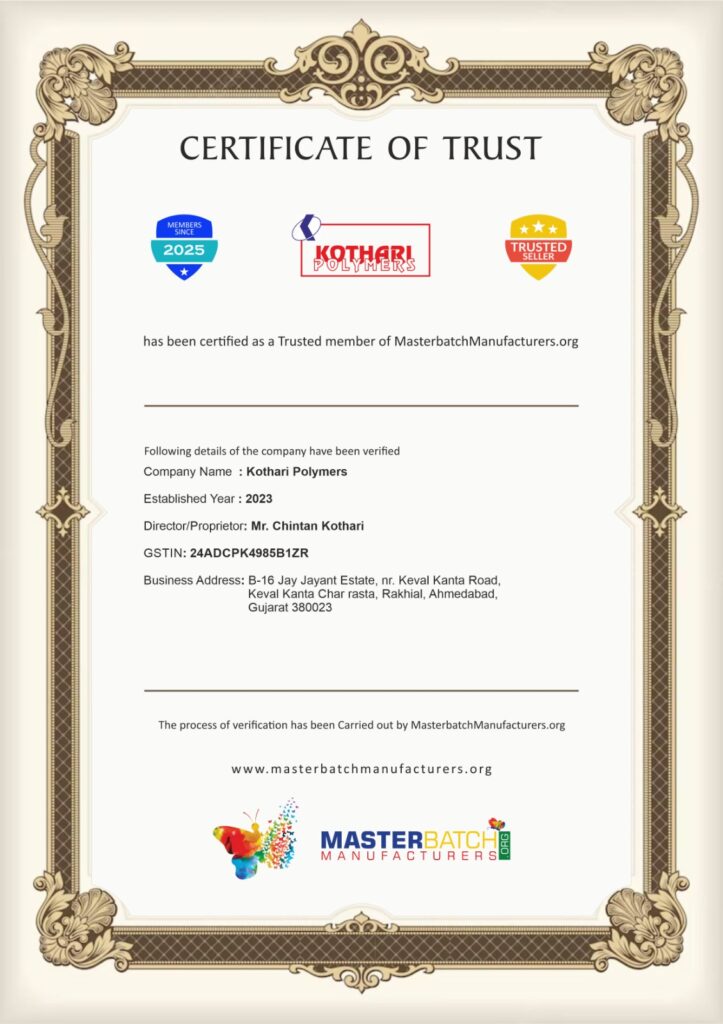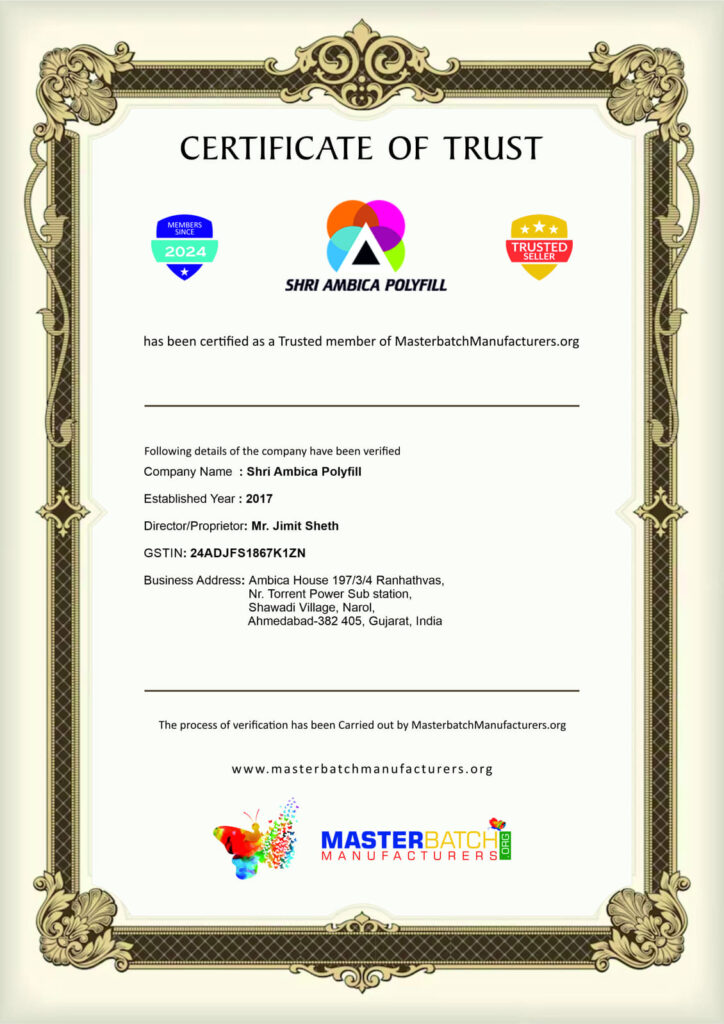1. What is Desiccant Masterbatch?
Answer: Desiccant Masterbatch is an additive used in plastic manufacturing to absorb moisture within plastic materials. It helps improve product quality by preventing moisture-related defects like bubbles, rough surfaces, and structural instability.
2. How does Desiccant Masterbatch work?
Answer: Desiccant Masterbatch contains moisture-absorbing compounds that attract and trap water molecules in plastic during processing. This keeps moisture from causing defects in the final product, ensuring better durability and appearance.
3. Why is moisture control important in plastic manufacturing?
Answer: Moisture can lead to defects in plastics, such as poor surface finish, bubbles, and reduced structural integrity. Controlling moisture is crucial to produce high-quality plastic products that meet industry standards.
4. What are the main applications of Desiccant Masterbatch?
Answer: Desiccant Masterbatch is widely used in packaging, recycling, injection molding, and plastic extrusion processes where moisture control is essential to maintain product quality.
5. Who are the leading Desiccant Masterbatch Manufacturers in India?
Answer: India has several reputable Desiccant Masterbatch manufacturers that supply high-quality desiccants for domestic and international markets. Some well-known manufacturers include those focused on polyethylene desiccants and silica-based compounds.
6. Can Desiccant Masterbatch be used with recycled plastics?
Answer: Yes, Desiccant Masterbatch is particularly beneficial in recycled plastics, where moisture levels are often higher. It helps remove moisture, allowing recycled plastics to be processed with fewer issues.
7. What are the benefits of using Desiccant Masterbatch?
Answer: Key benefits include enhanced product quality, improved structural integrity, cost-effective production, increased recycling efficiency, and extended product lifespan by controlling moisture in plastic products.
8. How does Desiccant Masterbatch contribute to sustainable practices?
Answer: Desiccant Masterbatch improves the quality of recycled plastics by removing excess moisture, making them more suitable for reuse. This supports sustainable manufacturing by enabling the efficient recycling of plastics.
9. What types of Desiccant Masterbatch are available?
Answer: Common types include silica-based desiccant compounds, polyethylene desiccant masterbatch, and anti-moisture granules. Each type is formulated for specific plastic applications and environments.
10. What industries benefit most from Desiccant Masterbatch?
Answer: Industries such as packaging, recycling, automotive, and consumer goods benefit from Desiccant Masterbatch due to the high demand for moisture-resistant, durable plastic products.
11. How does Desiccant Masterbatch improve injection molding?
Answer: In injection molding, Desiccant Masterbatch prevents defects caused by moisture, such as bubbles and poor finish, ensuring high-quality molded plastic parts with a smooth surface and consistent properties.
12. Can Desiccant Masterbatch be used in both polyethylene and polypropylene?
Answer: Yes, Desiccant Masterbatch is compatible with both polyethylene and polypropylene, helping to reduce moisture content in these materials and improve their performance and durability.
13. What are anti-moisture granules, and how are they related to Desiccant Masterbatch?
Answer: Anti-moisture granules are a form of Desiccant Masterbatch designed to absorb moisture in various plastic manufacturing processes, including injection molding and extrusion, helping to control moisture and prevent defects.
14. How does Desiccant Masterbatch help with cost-effective production?
Answer: By preventing moisture-related defects, Desiccant Masterbatch reduces rework and waste, leading to more consistent production runs and lower manufacturing costs over time.
15. Is Desiccant Masterbatch safe for use in food packaging?
Answer: When manufactured according to food safety standards, Desiccant Masterbatch can be used in food packaging. It helps keep packaging materials dry, which is critical for preserving food quality.
16. What is the lifespan of products made with Desiccant Masterbatch?
Answer: Products made with Desiccant Masterbatch typically have a longer lifespan due to enhanced structural integrity and resistance to moisture-related degradation, making them suitable for extended use.
17. How do I choose the right Desiccant Masterbatch for my application?
Answer: The right choice depends on factors like the type of plastic, processing method, and application. Consulting with Desiccant Masterbatch manufacturers can help you select the most suitable formulation for your needs.
18. Are there any disadvantages to using Desiccant Masterbatch?
Answer: While Desiccant Masterbatch provides many benefits, its usage can add slightly to production costs. However, this cost is often offset by the improved quality and reduced waste it brings to manufacturing.
19. What future trends are expected for Desiccant Masterbatch?
Answer: Innovations are expected to improve the efficiency and functionality of Desiccant Masterbatch, especially in sustainable plastic manufacturing and recycling, making it an increasingly essential additive.
20. How can I find reliable Desiccant Masterbatch suppliers?
Answer: Researching reputable Desiccant Masterbatch Manufacturers, especially those with a strong presence in regions like India, can help you find reliable suppliers with quality products and technical support.






